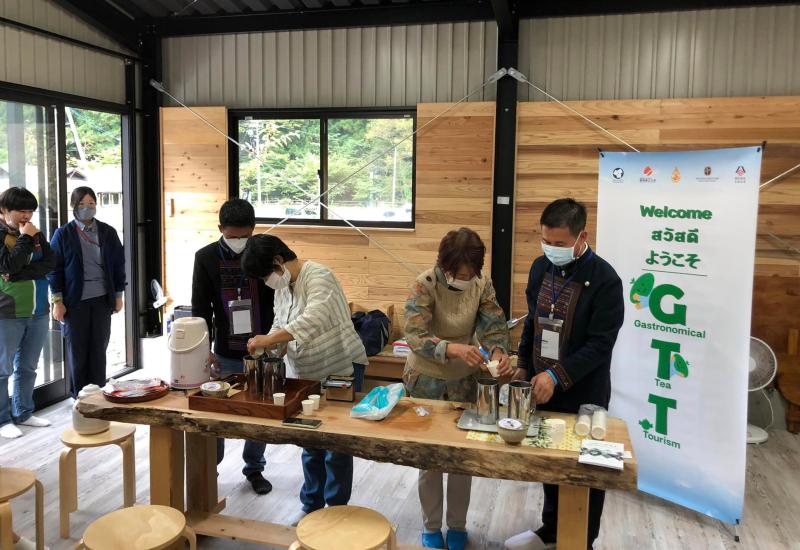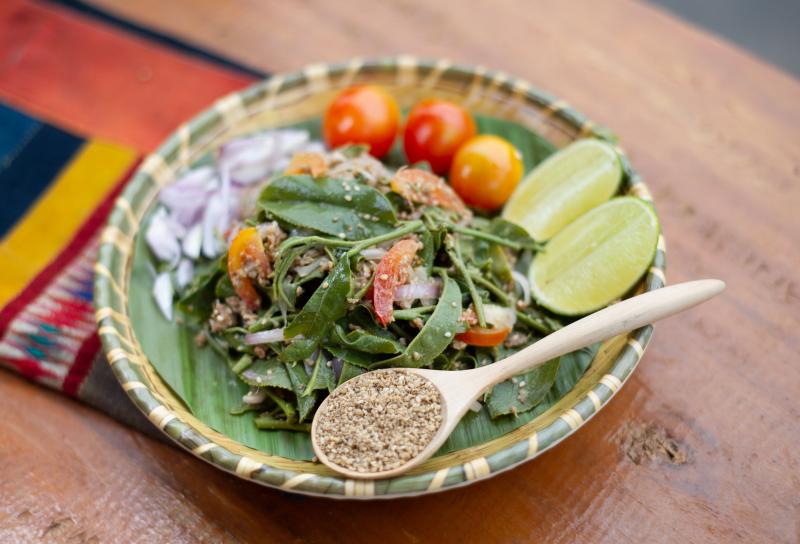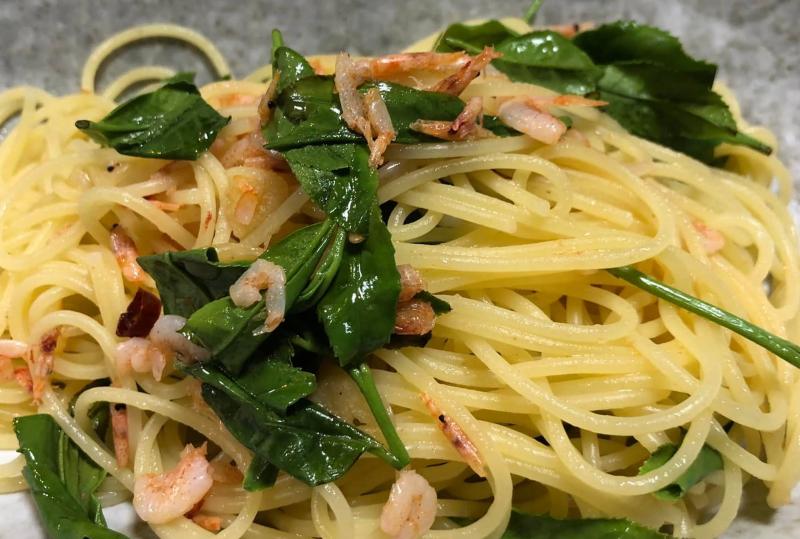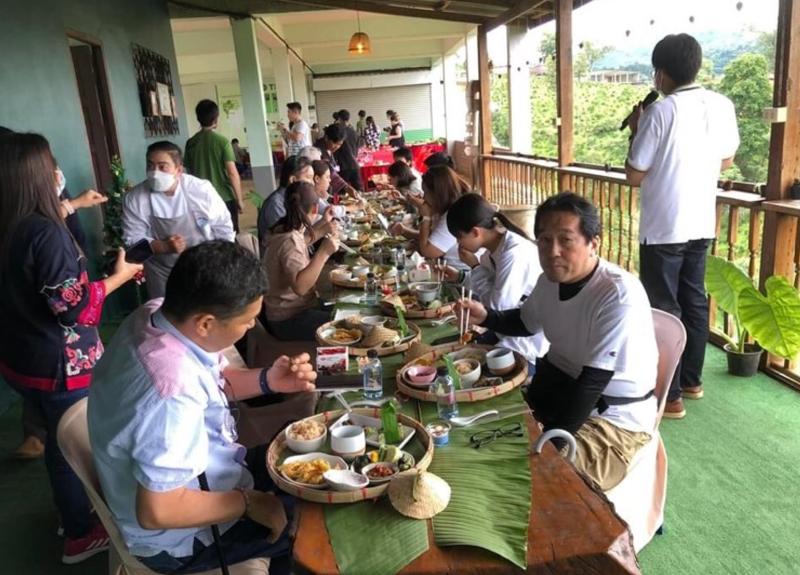Tea is not just a beverage. It can be used as an ingredient in local cuisine, too. This was demonstrated by two tea communities in villages in Japan and Thailand under a two-year gastronomical tea tourism project (2020 - 2022) funded by The Toyota Foundation, where the two groups developed tea cuisine, tea cocktails and a package of tea trails.
The two villages are Phaya Phrai village in Chiang Rai, the largest tea-growing community in northern Thailand, and the Umegashima hot spring village in Shizuoka, Japan.
The effort was an international exchange project to revitalize the tea industry communities in Thailand and Japan through gastronomy and tea tourism.
In Thailand and Japan, tea-growing communities have faced a decline in the tea industry due to low prices and a lack of young farmers. In northern Thailand, tourism is used to generate more income as an added-value to tea. In Japan, the aging population and a low birth rate has caused domestic tourism and tea-producing communities to decline.
The United Nations World Tourism Organization (UNWTO) believes that gastronomic tourism can provide benefits like differentiation and unique positioning of a region, new opportunities and experiences for visitors, and implementation of tourist activities in less-developed regions and those lacking facilities (even small villages). It can all lead to high, new revenue for the region and a desire to return among visitors.

‘The Culinary Image of Tea Could Be More Distinctive’
Tea farmers and tourism-related entrepreneurs, including chefs under the project, visited each other to exchange ideas on developing tourism products related to gastronomy and tea tourism – based on four elements of tea culture: tea spaces, tea communities, tea products and tea-related activities.
As a result, a new tea pairing menu and cookbooks for Umegashima and Phaya Phrai were created, offering new ways of looking at tea as a valuable ingredient in food and beverages. This new approach required innovative ideas, from garden-fresh tea leaves to various processed tea products (e.g., green tea, black tea, tea powder, pickled tea, tea oil and tea syrup), which can be made using other local farm products and natural ingredients, such as herbs.
“When we think about tea, the image of a beverage pops into our heads,” said Associate Professor at the University of Shizuoka, Dr. Amnaj Khaokhrueamuang, project head. “But the culinary image of tea could be more distinctive. This project, therefore, is a great effort to add the value of tea emerging with the concept of gastronomy and tea tourism. In many destinations, gastronomy has become part of the tourism industry and the primary purpose of travel. Tea culinary involves the growing, processing and service in restaurants, cafes, accommodations and communities. So, tea-growing communities should consider using tea as an ingredient in local cuisine. In this project, our members, especially chefs, created a unique tea cuisine menu and shared ideas between Thai and Japanese teams.”
Dr. Khaokhrueamuang added: “We shared the recipe for tea cuisine of the ethnic Akha and Umegashima with the public. Local people, tourists and everyone can use the cookbook for different purposes. I love this idea that tea can make a value chain in gastronomy.”
In Umegashima, gastronomic tea tourism trails were created where tourists can experience tea cuisine; while in Paya Phrai, the local chefs taught the villagers how to create unique tea cuisine that represents the Akha identity. One example is the khanom chan cha, the traditional Thai tea-layered cake served with Umegashima's black tea syrup.

Exciting Ways of Reimagining Tea
The project's cookbooks for Umegashima and Phaya Phrai offer new ways of looking at tea as a valuable ingredient in food and beverages. The cookbooks include Phaya Phrai's traditional ethnic tea cuisine of Akha, such as moo ho bai cha (pork wrapped in tea leaves), and Umegashima's Western dishes with local Japanese ingredients, such as pepperoncino tea spaghetti with Sakura (cherry blossom) shrimp. More than 10 of the recipes that were developed through the project’s exchange of ideas can be cooked at home or in restaurants.
Lee Jolliffe, tea tourism consultant and lead editor of Routledge Handbook of Tea Tourism, said the project was the first to formally link tea villages in two different countries in a learning exercise that included tea gastronomy and tea tourism.
“Tea farmers and communities can always benefit from interacting and learning from each other,” explained Jolliffe. “It would be easier for neighboring countries in a single geographical region that produces tea to cooperate and benefit from a project that pairs tea communities together.”
Jolliffe added: “I experienced tea tourism in both communities and can say that it is authentic and genuine. The small-scale experiences here are unique and the activities are helping the community members to showcase their unique tea heritages and to recognize their value.”

Dr. Khaokhrueamuang said gastronomical tea tourism can be implemented even in less-developed regions and those lacking distinctive tourism resources. “If the tea-growing community creates the uniqueness of tea cuisine representing the local identity, it will attract more visitors, especially tea lovers,” he shared. “For example, keeping the typical menu and creating new recipes for tea cuisines, providing learning activities from tea gardens to tea service such as tea picking, tea-processing, tea-tasting, tea-blending, tea-pairing, tea cooking and having tea dishes.”
Tea Exchange of Knowledge and Experience
“The interaction and exchange of knowledge and experience between locals and tourists is crucial for developing tea gastronomy and tourism,” noted Dr. Khaokhrueamuang. “When creating tourism activities for this target, we should keep the idea that tea is more than just a drink. Gastronomical tea tourism can be a tool for local participation, cultural conservation, economic revitalization and rejuvenation of the declined tea industry. Therefore, gastronomical tea tourism can strengthen small enterprises in tea-growing communities worldwide.”
Naomi Okiyama of the Toyota Foundation pointed out that gastronomical tea tourism cannot be operated by a single person. “It is important that local people agree on what kind of tourism destination they want for their communities and build a cooperative relationship,” she said.

Songsuk Boonthawong, a tourism lecturer at the Far Eastern University, who participated in the exchange activity at Phaya Phrai with the Japanese team, said the exchange of knowledge and experience in tourism operations between communities benefits social relationships, community information management, environmental conservation and other resources are relevant to income.
Masuki Nagura of Shizuoka Japan Thailand Association said that linking tea gardens, farms, restaurants providing tea cuisine services, and other tourism sites – such as hot springs and waterfalls as gastronomical tea tourism walking routes in Umegashima – is an excellent model for other tea-producing regions to be replicated.
The recent project also saw students from the Manipur state of India, who participated to learn about tea and the culture of the Akha village.Karuna Dechatiwong, former director of the Tourism Authority of Thailand, Chiang Rai office, and one of the project members of Phaya Phrai, noted that in tourism marketing, each market segment has a different character and, similarly, in tea marketing, each country has a different taste for tea.
“For Thailand, now, India is the rising star and one of the primary inbound markets, which may be highly interested in Thai tea due to being a tea-producing and consumer nation,” said Dechatiwong. “Phaya Phrai and other tea-producing communities should also have chances to learn how to deal with different segments, such as nations, [age], behaviors and economic status. They can do the service design to fit all segmentations.”
Roopak Goswami has worked for more than two decades as a newspaper journalist in Northeast India. Tea is his passion, and he covers the global tea industry regularly for World Tea News.
Plan to Attend or Participate in the
World Tea Conference + Expo, March 27-29, 2023
To learn about other key developments, trends, issues, hot topics and products within the global tea community, plan to attend the World Tea Conference + Expo, March 27-29, 2023 in Las Vegas, co-located with Bar & Restaurant Expo. Visit WorldTeaExpo.com.
To book your sponsorship or exhibit space at the World Tea Conference + Expo, or to enquire about advertising and sponsorship opportunities at World Tea News, contact:
Ellainy Karaboitis-Christopoulos
Business Development Manager, Questex
Phone: +1-212-895-8493
Email: [email protected]
Also, be sure to stay connected with the World Tea Conference + Expo on social media for details and insights about the event. Follow us on Twitter, Facebook, Instagram and LinkedIn.
